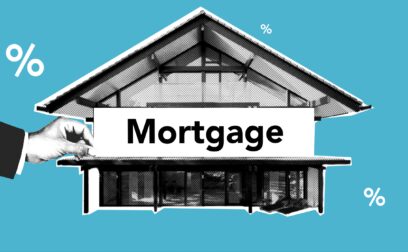Building a property portfolio can be a hugely profitable investment, but only if it’s done right. If you’re thinking of taking the plunge, our guide takes you through the process of getting started, choosing the right strategy and deciding on long-term goals.
What is a property portfolio?
A property portfolio is a collection of properties owned by an individual, group or company for the purpose of generating income. This can include residential, commercial and industrial properties that are rented out to tenants. Income can also be generated by holding on to the properties for a number of years so that they can rise in value, allowing you to sell them for a profit.
A well-managed property portfolio should provide a steady and reliable income stream over the long-term, with the aim of increasing wealth. It might even enable you to retire early.
To help minimise risk and increase your chances of success, it’s sensible to diversify your property portfolio by having different property types in different locations.
How to start a property portfolio
The steps below will guide you through the process of building a property portfolio.
Set your targets
Your very first step is to think about your targets and goals. Ask yourself what you are hoping to achieve through your property portfolio. Do you want to boost your earnings through rental income or are you hoping to benefit from property price growth when you sell the property? You might want to hit both targets – after all, if you want to see your property’s value go up, you might have to hold onto it for a while and rent it out during that time.
Thinking about your short-term, mid-term and long-term plans can help give you the best chance of success.
Perform market research
Your next step is to do some careful research. This can help you to work out the right type of property and the best areas to invest in to help you achieve your goals. When carrying out your research, the following tips should help:
- Speak to local estate agents about current market trends and demand. Find out whether tenants are mostly looking for long or short-term leases in the area, whether tenants tend to be young professionals or families, and what sort of property features they want.
- Look at the amenities and transport links in the area – if they are good, it’s less likely your property will be empty for long periods of time.
- Join a landlord or property investment community so that you can ask questions and learn from others.
- Take a look at property portals to assess average property and rental prices. It’s also worth looking at other areas to see how they compare.
- Research average rental yield in your chosen area to determine potential rental profits. Rental yield is the amount of money you earn from a rental property in a year divided by the total property value. You can use this information to help you decide what type of property would be profitable for you to buy and rent out.
- Speak to a financial adviser to help you determine what you can afford – remember there will be additional costs such as insurance, tax and stamp duty to consider.
Start your portfolio with one property
It’s best to start small with your property portfolio and then expand. Rather than buying several properties at once, only buy one initially.
Make sure your first investment is a low-risk one. You might want to pick a property that requires little renovation and is close to where you live so that you can easily deal with any maintenance issues, for example.
Once your first property is making a good return, you can consider buying more.
Have a purchase strategy
When you find a property you want to buy, it’s a good idea to have a strategy in place so that you can maximise your return on investment. This could be a maximum price you want to pay, dependent on the potential rental yield on offer.
If you’re in a rush, you might be happy to pay the asking price (or even more than this), but if you can take your time, you might be able to grab a bargain by going in lower. This is more likely to be successful if you know the seller is keen to move quickly or if demand for buying properties is low (a buyer’s market).
It’s also worth considering where you want to buy your properties. For example:
Auction
You might be able to grab a cheaper property at auction and the timescales for buying the property can also be much shorter. However, it’s crucial that you have the funds to hand as you’ll usually need to pay a deposit immediately. There will also be fees to pay so make sure you’ve read the small print so you don’t get caught out. Also set an affordable bid limit so that you do not overstretch yourself.
BMV properties
Below market value (BMV) properties are usually a much cheaper investment because they need a lot of work or because the seller has fallen into financial difficulty and needs to sell fast. They often have good investment potential. You might be able to get a BMV property from an auction or through an estate agent.
Traditional property sale channels
Alternatively, you might prefer to buy properties through traditional property sale channels such as local estate agents and property portals.
Manage your finances
Another crucial part of building a property portfolio is to watch your finances. Make sure you check whether your rental income will cover your mortgage payments and other outgoings such as landlord insurance. Ensure you’re getting a reasonable return on your investment.
It’s also important to think about how you would cope financially if you had to pay for major repair costs on the property or if a tenant moved out. If you know how much demand there is in the area, you should have an idea of how quickly you might be able to get a new tenant and how many months you could be without income from that particular property (a void period).
Be selective with tenants and look after them
Because you don’t want your property to be standing empty for months at a time, it’s also important to choose your tenants carefully. If you choose the right tenants and look after them, they are more likely to treat the property with care and stay for longer.
If you employ a letting agent, they can help you find tenants and will also usually carry out a reference check for you. If not, you can pay for a referencing company to do the checks – this usually costs between $10 and $50. Carrying out these checks help you to assess whether a prospective tenant is suitable and will provide information on their employment history, ability to pay rent and previous dealings with landlords.
It’s also a good idea to meet potential tenants to get an idea of whether you can have a good relationship with them and whether they are reliable. Keep in mind that there are rules against discriminating against characteristics including age, gender, sexuality or disability. You will also need to meet a number of compliance obligations.
Once you’ve chosen your tenants and they’ve moved in, it’s important to ensure you are easy to contact, give tenants plenty of notice before visiting and respond quickly to any maintenance and repair requests.
All of this can increase the chances of your tenants staying for longer and getting a solid return on your investment.
Expand your portfolio cautiously
Even if your first investment has been a success, it’s best to take a considered approach to building the rest of your portfolio. Keep track of how the property market and wider economy are performing so that you know the best times to buy and sell.
Seek funding for further properties
If you’re looking to fund further property purchases, there are a number of options available to you.
A commercial mortgage is one of these. Commercial mortgages work in a similar way to residential mortgages but the value of the property is usually higher. You can usually take your mortgage out over a term of between three and 25 years and you will typically need a deposit of between 20% and 40%.
Be aware that if you want to buy more properties, it’s usually best not to borrow against the value of multiple properties at the same time as you could end up having to sell them all if you struggle with the repayments. Before you make any further investment, it’s wise to speak to a mortgage adviser who will be able to discuss your options with you.
Have a long-term plan
Finally, it’s really important to plan for the future and be prepared to adapt if the rental market moves quickly. Consider exactly what you’re hoping to achieve in the long-run, whether that’s having a reliable income to supplement your job, changing careers by focusing on building a large portfolio of properties to manage, or intending to sell all of your properties at some point.
Having a suitable exit strategy in mind will help to increase your chances of success.








 yet? Register here!
yet? Register here!